|
Tomorrow’s Feast of the Visitation of the Blessed Virgin Mary to her cousin Elizabeth celebrates an encounter between two unlikely mothers. What richness can be found in contemplating the embrace and companionship between these two women!
Luke 1:39 recounts how immediately after learning that she was with child, Mary traveled to the home of her cousin Elizabeth, who, despite her old age, was also pregnant. Learning about a pregnancy can bring with it a flood of far-ranging emotions, questions, and concerns that can leave one reeling; it’s not hard to justify a response of turning inward. Yet Mary set out in haste to be at the side of her kinswoman. In undertaking a difficult journey to be with another, our Blessed Mother highlights the importance of supporting and accompanying women, especially those who may be experiencing challenging or difficult circumstances. Indeed, when considering the two women in this Gospel passage, we can recognize an unexpected pregnancy, years of enduring the pain of infertility, and a great deal of uncertainty. Countless women today face these same struggles, often alone and in fear, with no idea of where to turn for support. It is our duty to offer these—and all women—the companionship Mary and Elizabeth shared. Motherhood (and the journey towards motherhood) presents physical, mental, emotional, spiritual, practical, and financial difficulties like no other. It carries with it utter bliss, heart-rending sorrow, and everything in between—none of which should be carried alone. In the Visitation, we see a model of how we are called to enter into the realities women face and offer support and accompaniment, especially to mothers who are most in need. As the USCCB’s Respect Life Prayer & Action monthly prayer guide for May put it: “In addition to ‘walking with’ mothers in love, support, and friendship, we can also help answer their needs for practical and material assistance. Inspired by our Blessed Mother, we can help connect mothers with the Church’s extensive network of social services to ensure mothers and their children obtain all the necessities of life. Through generous stewardship of the gifts God has entrusted to us of prayer, time, talent, and treasure, we can help meet the needs of mothers as they welcome and care for God’s precious gift of life.” I invite you to celebrate this feast day by imitating the example of Mary and taking the initiative to reach out to a woman in your community. While this may involve going a bit outside our comfort zone, each of us, no matter where we are in life, can offer this much-needed kinship. We don’t have to be in the same boat as a woman in need or know her pain or experience firsthand. We are simply called to walk alongside her, providing support, friendship, and encouragement. Accompaniment does not mean taking on or attempting to fix someone’s problems. It means a willingness to listen, to be truly present to another, to offer reassurance, closeness, and compassion. Reaching out to a woman in your community can take many forms, from working to enact systemic change (such as advocating for paid parental leave or working to ensure access to healthcare) to just grabbing a cup of coffee with a mom you know. Other concrete ideas for living out the spirit of the Visitation include offering to babysit, donating to or volunteering with a local pregnancy center, starting or joining a mom’s group at your parish, organizing a diaper drive, or making a meal for a family. You may consider getting involved with Walking with Moms in Need, the Church’s nationwide initiative that helps Catholics form parish teams to identify resources in their local area and connect pregnant and parenting mothers with support and services. For a woman struggling in her fertility journey, just lending an ear, offering to accompany her to a doctor’s appointment, or putting her in touch with someone else who has been there can make a huge difference. In every gesture of closeness, we will find ourselves enriched and accompanied in return. May we strive to emulate authentically the spirit of the Visitation, so that every woman can come to feel the profound embrace of kinship! **Image: https://artmuseum.princeton.edu/collections/objects/34052**
0 Comments
On the First Sunday of Lent, the Gospel described how Jesus fasted for forty days and forty nights, and yet when Satan approached him in this state of hunger, he was still able to resist the temptation to turn stones into bread and provide food for himself. Jesus responded to this test by recalling the words of Deuteronomy 8:3, “[The LORD] therefore let you be afflicted with hunger, and then fed you with manna, a food unknown to you and your ancestors, so you might know that it is not by bread alone that people live, but by all that comes forth from the mouth of the LORD. This passage pairs beautifully with the brief but profound and beautiful reflection contained in that Sunday’s Prayer after Communion: “Renewed now with heavenly bread, by which faith is nourished, hope increased, and charity strengthened, we pray, O Lord, that we may learn to hunger for Christ, the true and heavenly Bread, and strive to live by every word which proceeds from your mouth. Through Christ our Lord.” With these words, the liturgy reminds us of why fasting is so central to our Lenten observances. Firstly, when we are “afflicted with hunger,” we more readily recognize our frailty and our dependence on God’s providence, just as the Israelites did when the Lord provided manna to sustain them in their desert wanderings. In our weakness and tendency toward self-reliance, we are invited to acknowledge that the food that we have is a gift which we receive from the Lord’s bounty. Second, we are reminded that the physical hunger we experience is not mortification for its own sake, nor do we choose to feel this hunger simply to “appear to others to be fasting” (Mt 6:16) and score points with them or with God. Rather, foregoing physical nourishment is a means towards the end of “learn[ing] to hunger for Christ, the true and heavenly Bread.” This penance reorients our appetites, redirecting them from worldly comforts to that which provides true sustenance—Christ, who offers his very self to us as “the bread of heaven” and “the cup of salvation.” Indeed, as Jesus says, “My flesh is true food, and my blood is true drink. Whoever eats my flesh and drinks my blood remains in me and I in him” (Jn 6:55-56). Therefore, “The principal fruit of receiving the Eucharist in Holy Communion is an intimate union with Christ Jesus” (Catechism of the Catholic Church, 1391). While we often seek to satisfy our earthly cravings through superficial means, Christ satisfies our hunger for goodness and love in a way nothing on earth could. The relationship into which we enter through the eucharistic banquet sustains us in our day-to-day living and puts us in touch, in intimacy with Christ who knows well our sufferings, offers us compassion and solidarity, and models for us a way forward. Having received this heavenly nourishment, Jesus abides in us so that God’s grace can act in us more freely. It turns us outward in service of others, for “As bodily nourishment restores lost strength, so the Eucharist strengthens our charity, which tends to be weakened in daily life…By giving himself to us Christ revives our love and enables us to break our disordered attachments to creatures and root ourselves in him” (Catechism of the Catholic Church, 1394). Looking beyond our own needs and desires, we recognize the needs and desires of our neighbor and are moved to action. We are drawn “into Jesus’ act of self-oblation…More than just statically receiving the incarnate Logos, we enter into the very dynamic of his self-giving” (Deus Caritas Est, 13). We are moved to acts of service and almsgiving, to be bread for others. Indeed, “The Eucharist commits us to the poor. To receive in truth the Body and Blood of Christ given up for us, we must recognize Christ in the poorest, his brethren: ‘You have tasted the Blood of the Lord, yet you do not recognize your brother’” (Catechism of the Catholic Church, 1397). As we fast this Lent, then, let us be mindful of how our hunger directs us to Christ present in the Bread of Life and in our neighbor. The grace before meals I have prayed since I was a child sums this up beautifully: “Señor, da pan a los que tienen hambre y hambre de ti a los que temenos pan” (“O Lord, give bread to those who hunger, and a hunger for you to those of us who have bread”). Today we celebrate the Solemnity of the Immaculate Conception. In celebrating this feast, we confess that: “The most Blessed Virgin Mary was, from the first moment of her conception, by a singular grace and privilege of almighty God and by virtue of the merits of Jesus Christ, Saviour of the human race, preserved immune from all stain of original sin” (Catechism of the Catholic Church, 491). That is to say: Mary, in a unique way, was free of original sin, so that, unburdened by the fear, confusion, and selfishness that accompany sin, she could give her “yes” with absolute freedom when asked to bear the Son of God. The Prayer over the Offerings at today’s Mass describes this teaching beautifully by saying, “We profess [Mary], on account of [God’s] prevenient grace, to be untouched by any stain of sin, so, through her intercession, we may be delivered from all our faults.” While “prevenient grace” is a bit of an unusual term, and not one most of us learn in religious education classes, it gets at the heart of what we celebrate on this our patronal feast day for the United States of America. The “prevenient grace” Mary receives is a grace given in anticipation of the extraordinary role she would play in salvation history as the Mother of God, but it also shows her ordinary human nature. Mary is not divine; like the rest of humanity, she too needs God’s grace and redemption through Christ’s saving actions. We might consider the following analogy which is often referenced in explanation of this teaching. Suppose a man falls into a deep and muddy pit, and someone reaches down to pull him out. The man has been “saved” from the pit but hasn’t escaped the mud stains he got from falling into it. Now imagine a woman walking along about to tumble into the pit herself, but just as she is about to fall in, someone holds her back and stops her from falling in. She too has been “saved”—not only from falling into the pit, but also from getting stained by the mud in the first place. While we receive God’s grace when we are cleansed of original sin in the waters of Baptism, Mary was kept free from the stain of original sin from the first moment of her existence. We are all saved by the same sacrifice of Jesus on the cross; Mary, however, was given this gift at a different point in time. The Catechism goes on to describe how this gift of grace was necessary for Mary’s unique vocation: “To become the mother of the Saviour, Mary ‘was enriched by God with gifts appropriate to such a role.’ The angel Gabriel at the moment of the annunciation salutes her as ‘full of grace.’ In fact, in order for Mary to be able to give the free assent of her faith to the announcement of her vocation, it was necessary that she be wholly borne by God's grace (Catechism of the Catholic Church, 490). Just as Mary had to be given the grace she needed to respond to her vocation, we too must rely on the grace of God to answer God’s unique call for us. It is fitting that we celebrate this feast within the season of Advent. We may well take advantage of this holy season and all it offers to open ourselves evermore to the gifts God wishes to bestow on us, so that we too can bring Christ’s presence to a world very much in need of it. Mary was able to devote herself to God’s will “wholeheartedly, without a single sin to restrain her, she gave herself entirely to the person and to the work of her Son…by God's grace” (Catechism of the Catholic Church, 494). We too can find ourselves more attuned to God’s will after seeking out the forgiveness of our sins through the Sacrament of Reconciliation, which is offered more frequently during this season of Advent. We can pause during this season of preparation and reflect on the following: How am I responding to my unique God-given vocation? How can I cooperate more freely with God’s will? How am I being called to make Christ present here and now? How can I cultivate a greater reliance on God’s grace? As we joyfully await the coming of Christ, may Mary, “full of grace,” loving mother, and model of holiness, intercede for us!
With the newliturgical year beginning this first Sunday of Advent, I am making a resolution to approach each liturgical season and day with more intentionality. In my collaboration with religious communities, I have come to admire the way they commemorate the life of their particular community within the rhythm of liturgical feasts and seasons. Their communal prayer is often guided by an ordo, a list specific to each community and/or diocese that organizes the dates of feasts (particularly those special to the community, such as patronal feasts or local saints), readings, and a necrology (the anniversaries of the deaths of members of the community) for each day. They also celebrate milestones and anniversaries of the profession of final vows and ordinations.
Why not approach the liturgical year in a similar way in our own family, our domestic Church? We too can strive to be more mindful about preparing for and celebrating special days within our Church and our family, taking time beforehand to plan which Mass to attend or finding other creative ways to observe a feast or special occasion. As we approach this new liturgical year, it may be a good time to look ahead and make plans to mark not only the big celebrations, like Christmas and Easter, but also every feast day your family may want to celebrate. Certainly this includes birthdays and anniversaries, but it also means making note of
To find some of these dates, you may need to refer to sacramental records, such as a Baptismal Certificate, or consult family members. Personal planner templates available online can be customized to mark these dates, and once you’ve compiled a basic list, you can continue to add to it year after year. You may also wish to set aside a few special items for these celebrations, such as a bottle of holy water, a baptismal candle or baptismal garment, pictures from the event observed, holy cards, or images of the saints or family members commemorated. Children may particularly enjoy setting up a prayer space to reflect the occasion. One helpful resource for planning is the Catholic Apostolate Center’s feast day website, which has information about the saints organized by feast day, region, time period, and more. Another useful resource is a book entitled Catholic Household Blessings and Prayers from the United States Conference of Catholic Bishops. It contains special blessings for birthdays, name days, and baptismal anniversaries as well as short daily prayers; seasonal blessings and prayers; blessings for life events such as graduations, birthdays, engagements, pregnancy, childbirth, adoption, and moving into a new home; and prayers for times of sickness and difficulty. You can even make it a practice to have a special meal on these days, choosing a menu related to the feast being observed or simply enjoying the favorite foods of the person being celebrated. Not only can you take the opportunity to share about your faith, but you can also share a bit of family history and bring the liturgical year to life in a more personal way. By doing these things, we learn more about the mysteries and people of faith commemorated, even as we strive to emulate them. We also join in the age-old tradition of the “People of God [who] have observed fixed feasts, beginning with Passover, to commemorate the astonishing actions of the Savior God, to give him thanks for them, to perpetuate their remembrance, and to teach new generations to conform their conduct to them” (Catechism of the Catholic Church, 1164). This approach of gratitude, remembrance, and faithfulness may help us live the liturgical seasons more fruitfully, as we unfold throughout the course of the year the various aspects of “the whole mystery of Christ from his Incarnation and Nativity through his Ascension, to Pentecost and the expectation of the blessed hope of the coming of the Lord” (Sacrosanctum Concilium, 102 §2). May this new liturgical year truly be a “year of the Lord’s favor” (Lk 4:19)!
Today’s feast of Saint Francis of Assisi is often marked with a blessing of pets that tends to draw a crowd. A statue of Saint Francis can be found in many people’s gardens, even those who would not necessarily describe themselves as religious. What is it that is so compelling about this thirteenth-century figure?
In his encyclical Laudato Si’, Pope Francis gives us his own response: “I believe that Saint Francis is the example par excellence of care for the vulnerable and of an integral ecology lived out joyfully and authentically. He is the patron saint of all who study and work in the area of ecology, and he is also much loved by non-Christians. He was particularly concerned for God’s creation and for the poor and outcast. He loved, and was deeply loved for his joy, his generous self-giving, his open heartedness. He was a mystic and a pilgrim who lived in simplicity and in wonderful harmony with God, with others, with nature and with himself. He shows us just how inseparable the bond is between concern for nature, justice for the poor, commitment to society, and interior peace” (Laudato Si’, 10). This description of Saint Francis reveals that he was much more than someone who loved animals. The harmony and peace that characterized his relationship with God, with fellow human beings, and with all of creation was rooted in an understanding of the interconnectedness of all of humanity and our common home. He would call creatures, no matter how small, “brother” or “sister”, not out of a naïve romanticism or a wrongly ordered affection, but out of a conviction that the beauty and goodness of all created things directs us to the infinite beauty and goodness of the Creator. Pope Francis said that Saint Francis viewed the world as “a joyful mystery to be contemplated with gladness and praise” (Laudato Si’, 12) and that “whenever he would gaze at the sun, the moon or the smallest of animals, he burst into song, drawing all other creatures into his praise” (Laudato Si’, 11). More than simply being a nature lover, Saint Francis understood his call to care for creation as a living out of the stewardship to which we are all called. The reverence and wonder and awe with which he approached nature affected all of his choices. Without “fraternity and beauty in our relationship with the world, our attitude will be that of masters, consumers, ruthless exploiters, unable to set limits on their immediate needs. By contrast, if we feel intimately united with all that exists, then sobriety and care will well up spontaneously. The poverty and austerity of Saint Francis were no mere veneer of asceticism, but something much more radical: a refusal to turn reality into an object simply to be used and controlled” (Laudato Si’, 11). It is for this reason that Saint Francis chose a life of poverty and dependence on the good will of others. His entire way of life was a refusal to use and control resources or people. It was a recognition that we receive all things as a gift, and that, when we take on the attitude of “masters, consumers, ruthless exploiters” set on satisfying our desires, those who suffer are usually the poor and the most vulnerable. Laudato Si’ offers the examples of food waste while many go hungry, fishing communities harmed by the pollution of water and depletion of fishing reserves, the change in sea levels forcing impoverished coastal populations to migrate, as well as “the premature death of many of the poor, in conflicts sparked by the shortage of resources” (Laudato Si’, 48). In response, and in imitation of Saint Francis, we are invited “to realize that a true ecological approach always becomes a social approach; it must integrate questions of justice in debates on the environment, so as to hear both the cry of the earth and the cry of the poor” (Laudato Si’, 49). When we counter the “throwaway culture” (Laudato Si’, 16) with a “concern for nature, justice for the poor, commitment to society, and interior peace” as Saint Francis did, it has far-reaching effects on everyone who shares our common home (Laudato Si’, 10). Today, let us pray for Saint Francis’ intercession, that like him, we may recognize the inseparable bond between ourselves and all of humanity, especially the poor, and the bond between ourselves and all of creation. May our attitudes and choices reflect this recognition and offer worthy praise to our Lord and Creator!
Mary is known by many titles and depicted in a variety of ways. Today’s feast, the Memorial of Our Lady of Sorrows, offers us an image of a woman filled with sorrow, a grieving mother. This title reminds us that she was no stranger to suffering. Indeed, the Church contemplates seven sorrows she endured, which Pope Francis described in a homily in April 2020:
“The first, just forty days after the birth of Jesus, is Simeon's prophecy that speaks of a sword that will pierce her heart (see Lk 2:35). The second sorrow is the flight to Egypt to save her Son's life (see Mt 2:13-23). The third sorrow, those three days of anguish when the boy remained in the temple (see Lk 2:41-50). The fourth sorrow, when Our Lady meets Jesus on the way to Calvary (see Jn 19:25). The fifth sorrow of Our Lady is the death of Jesus, seeing her Son there, crucified, naked, dying. The sixth sorrow, Jesus’ descent from the cross, dead, when she takes Him in her arms as she held Him in her arms more than thirty years before in Bethlehem. The seventh sorrow is Jesus’ burial. Thus, Christian piety follows this path of Our Lady who accompanies Jesus.” Blessed Basil Moreau, who founded the Congregation of Holy Cross and dedicated the congregation to the patronage of Our Lady of Sorrows, said of her, “It is (in her sorrows) that we shall see to what extent she has loved us! She stood at the foot of the cross, among the executioners and soldiers, so close to her dying Son that no detail of his death could escape her. ‘There by the cross of Jesus stood Mary his mother’ (Jn 19:25). What did she do in this circumstance, so painful for her heart, being minister before the altar on which the sacrifice of our redemption was accomplished?” Though it must have been unbearable to behold the abuse and brutal murder of her Son, Mary did not turn away. She remained as close as possible to her Son and participated in Christ’s gift of self. When I am confronted with sorrow—either my own or that of others—I am sorely tempted to simply look away, to live in denial or numbness, or to let myself be distracted by anything else. Working through grief, facing injustice, embracing the cross is incredibly difficult. “But if we shirk the cross, gone too will be our hope. It is in fidelity to what we once pledged that we will find the dying and the rising equally assured” (Constitutions of the Congregation of Holy Cross, 8:121). Truly, the Christian life calls us not to look away but rather to have ‘a heart which sees’. This heart sees where love is needed and acts accordingly” (Deus Caritas Est, 30). Allowing ourselves to be moved by suffering, acting and trusting that suffering can and will be transfigured by God’s grace is not weakness. In fact, as Pope Francis described in his Lenten message for 2015, “Anyone who wishes to be merciful must have a strong and steadfast heart, closed to the tempter but open to God. A heart which lets itself be pierced by the Spirit so as to bring love along the roads that lead to our brothers and sisters.” When we remain as close as possible to Christ and allow our hearts to see as Mary did, we find new strength. In the pierced heart of the Sorrowful Virgin, we find consolation, refuge, and tenderness. We find a mother who can truly empathize, who embraces our wounds with her gentle touch, just as she embraced the bruised and broken body of her Son. May our tears mingled with Mary’s be a worthy offering of love. May we, like Mary, cultivate a heart that sees, a heart which is firm and merciful, attentive and generous, and bears pain and sorrow well, “with strength, with tears” (Pope Francis, homily, April 2020). May we make our own the words of today’s sequence (also known as the Stabat Mater and used frequently in the recitation of the Stations of the Cross): O sweet Mother! font of love, Touch my spirit from above, Make my heart with yours accord. Make me feel as you have felt; Make my soul to glow and melt With the love of Christ, my Lord.
No banquet in Scripture would be complete without wine. More than a drink, it is a symbol of hospitality and festive joy, the fruit of the vine and work of human hands, which gladdens the heart (cf Psalm 104:15).
Imagine, then, running out of wine during a wedding feast! If Jesus had not intervened and supplied wine when it ran short, what would the newlyweds at Cana (John 2:1-11) have done? As I look back on the ten years of marriage my husband and I celebrate today, this image of Jesus coming to the aid of the bride and groom with the gift of good wine seems especially fitting. Overjoyed at finally getting to be together after two years of long-distance dating, our first year of marriage was exciting and fun, filled with adventure and plenty of questions about what the next year and beyond might bring. In our second year of marriage, my husband began his studies for a doctoral degree, we moved across the country back to our college town, and we bought our first home. The wine of gladness was plentiful in our first years of marriage. In the years that followed, we experienced many other joys, but not without some very real challenges. We came to know the heartache of infertility, the joys and hardships of parenthood, the stress of financial uncertainty, yet another cross-country move, the sorrow of pregnancy loss, the isolation and anxiety of the pandemic, and the strain of evolving job responsibilities. In many moments of difficulty, I wondered about our supply of wine. Was it enough? If our marriage depended solely on my abilities and choices, surely the wine would have run out long ago. Thankfully, not only do I have an incredible and selfless husband, but Christian marriage “is supported by the continuing presence of Christ in the life of the spouses as he pours into their hearts the gift of love through the Holy Spirit” (United States Catholic Catechism for Adults, p. 286). Through all the hardships, Christ has always poured out the grace we needed. When I wondered how we would have the fortitude to endure difficulties, the wisdom to discern a job opportunity, the patience to deal with interrupted sleep, endless laundry, potty training and more, we have had the unfailing support of family and friends and prayer and the sacraments to sustain us. The wine of grace flowed in unexpected moments of forgiveness, kindness, and understanding amid disagreements or miscommunications. I don’t know where it came from sometimes, but it certainly didn’t come from me! When we were first married, I couldn’t have anticipated all that would await us. We came together out of a love and attraction that has been a great gift. We remain together out of a love made firm in Christ. The United States Catholic Catechism for Adults describes how a couple is “challenged to unite their personal love with Christ’s love. Their human love will survive more effectively the cultural challenges they face, as well as the psychological and economic ones, when it is merged with the powerful love of Christ, who wants them to succeed and whose divine grace is ever at their service” (p. 286). As beautiful and wonderful as they are, the excitement and exhilaration of newly wedded bliss is not enough for a lifetime. The choice to love “for better or for worse, for richer or poorer, in sickness and in health” presents itself time and time again, and many times, it is far from easy. With God’s overflowing and abundant grace, the enduring love of marriage is made possible. Without it, the moment a difficulty arises, the wine runs short. Yet, just as Jesus provided the couple at Cana with far superior wine in greater quantities than they could have possibly needed, God has blessed my husband and me in ways that exceed my wildest imaginings. Ten years in, we share a richer, deeper, and wider life in common than when we were first married. I am filled with gratitude for the good wine of joy and fruitfulness we now savor. Though I don’t know what the next ten years will hold, I pray the wine of God’s grace will continue to flow freely! Watching my parents and in-laws become grandparents has been one of the greatest joys that has accompanied my having nieces and nephews and becoming a parent. I appreciate the relationship I have with my parents and in-laws in many ways, but I truly delight in seeing the relationship they have with my 3- and 4-year-old. The love and affection they demonstrate to my kids is tender, unique, and boundless. I am constantly amazed by their generosity and patience as they kindly agree to read book after book after book, go to the park, build an elaborate block structure, or watch my kids’ favorite show. Their hospitality and thoughtfulness shines through when they bring out the stash of toys they keep on hand just for them or plan special meals, always taking care to include all my kids’ favorite menu items. Not only do my parents and in-laws make my kids feel deeply loved in these day-to-day activities, but I can also tell how they are helping form them into the people I hope my kids will be. On occasions where I feel the need to discipline or scold my children, their grandparents are able to offer gentle correction and kind guidance. They don’t resort to force or bribery; they simply offer heartfelt advice and wisdom from their own experience. By praying with and for them, they serve as witnesses of deep faith. By sharing family stories, they preserve our shared memories, history, and roots. By offering to watch the kids so that my husband and I can get away for a bit, they provide much-appreciated support. As I muse over the time my kids spend with their grandparents, it makes me wonder what Jesus’ relationship with his grandparents was like. That is one of the many reasons I enjoy celebrating today’s feast of Saints Joachim and Anne, parents of the Blessed Virgin Mary and grandparents of Jesus. (Another reason is that my daughter, Ana, was named both for St. Anne and for my husband’s grandmother, who was born on this day). My imagination sets a scene of Jesus enjoying some of his grandmother’s home baked goods in the kitchen or out for a walk on the hilly countryside with his grandfather. Surely, they enjoyed quality time with their beloved grandson, caring for him with watchful eyes, holding him as he sat on their knees, and soothing his hurts or anxieties as only a grandparent’s unique perspective and calm can. In a World Youth Day message, Pope Francis describes how, “Saints Joachim and Anne were part of a long chain of people who had transmitted their faith and love for God, expressed in the warmth and love of family life, down to Mary, who received the Son of God in her womb and who gave him to the world, to us. How precious is the family as the privileged place for transmitting the faith! ... How important grandparents are for family life, for passing on the human and religious heritage which is so essential for each and every society! How important it is to have intergenerational exchanges and dialogue, especially within the context of the family…This relationship and this dialogue between generations is a treasure to be preserved and strengthened!” (Angelus, XXVIII World Youth Day, July 26, 2013). I have come to appreciate this treasure more and more as I try to respond to the Holy Father’s invitation to prioritize time with grandparents and the elderly. Besides speaking on several occasions of his own close relationship with his own grandmother, Pope Francis just last year established the celebration of the World Day for Grandparents and Elderly on the fourth Sunday of July, near today’s feast. In his message for this second occasion of its celebration, Pope Francis extols the virtues of grandparents and the elderly as “teachers of a way of life that is peaceful and attentive to those in greatest need”, “artisans of the revolution of tenderness in our world”, and “poets of prayer”. I recognize and admire these and many other qualities in my parents and in-laws. On this feast, my prayer is filled with joy and gratitude for the great gift my children have in their grandparents. I hope that they cherish the time they spend with their grandparents and value their example of love and witness of faith as I do. And I pray for the intercession of Saints Anne and Joachim, that my family will continue to be filled with this great love that spans generations. How much time do we spend fretting about the items on our to-do list? Whether it’s a long-term goal or a set of tasks for the day, the pressure to do all things (and to do them well) seems overwhelming at times.
In tomorrow’s feast of the Solemnity of the Annunciation of the Lord, we see how the Blessed Virgin Mary offers us an alternative to our preoccupation with personal accomplishments. Her response to the angel Gabriel’s message focuses instead on God’s initiative. The angel greets her saying, “Hail, full of grace!” (Luke 1:28), or in other biblical translations he refers to her as “highly favored.” Gabriel goes on to describe the greatness of the child she will bear: “He will be great and will be called Son of the Most High, and the Lord God will give him the throne of David his father, and he will rule over the house of Jacob forever, and of his kingdom there will be no end” (Luke 1:32-33). If I imagine myself in Mary’s place, I would find it very hard to resist merely contemplating my merits and basking in the divine recognition I had just received. Our Blessed Mother, however, thinks only of her lowliness before the Lord, identifying herself simply as “the handmaid of the Lord” (Luke 1:38). She knows that her “yes” to the Lord is far from simple. Because she was only betrothed to Joseph, her pregnancy could mean not only shame, but death by stoning. Despite such difficult circumstances and uncertainty as to how this could possibly come about (she asks, “How can this be?” (Luke 1:34)), she trusts in the power of the Most High. Allowing the Holy Spirit to work freely within her, she grants her full assent: “May it be done to me according to your word” (Luke 1:38). She gives no thought to how she can do this, but instead marvels at all that God does. Just a few verses later (Luke 1:46-55), Mary offers her great canticle known as the Magnificat, in which she proclaims the greatness of the Lord and all God’s mighty deeds. In her singular role within the history of salvation, Mary directs all attention to the grace of God that works within her. What a timely message during this liturgical season! It can be tempting to focus on what we have been doing (or not doing) for Lent. Yet this joyful mystery of the Annunciation prompts us to recognize what God is doing within us. After all, the purpose of a Lenten resolution is not simply to achieve a goal we have set for ourselves but to allow ourselves to be transformed by God’s grace. Perhaps in prayer over the next few days we might consider: How has God’s grace been at work in me lately? How can I entrust myself to the power of the Most High instead of getting bogged down in what I need to do and how challenging it may be? How can I allow the Holy Spirit to work in and through me? May our celebration of Mary’s life of charity, hidden sanctity, and faithful fulfillment of God’s will lead us to imitate her example, so that we too may be mindful of the great things the Lord has done in us and for us. I often find Lent to be a struggle. I’m the sort of person who likes to set goals and achieve them. Typically, this translates into making lofty Lenten resolutions, trying to rid myself of every bad habit, and ending up disappointed and disheartened when I fall short. When I heard the readings on the final Sunday before Lent, they seemed to be calling me to break out of this pattern. These readings, just a few days before Ash Wednesday, do not issue a challenge to achieve ambitious spiritual goals. Rather, the readings speak to us of growth and fruitfulness. The first reading sets the theme by describing how “The fruit of a tree shows the care it has had” (). Similarly, in the Gospel, Jesus reminds us that “every tree is known by its own fruit” (Luke 6:44-45). Sirach 27:6). Similarly, in the Gospel, Jesus reminds us that “every tree is known by its own fruit” (Luke 6:44-45). This theme of fruitfulness is woven throughout Scripture. In the Gospel of John, Jesus commands the disciples to “go and bear fruit that will remain” (John 15:16). Pope Francis describes bearing fruit as one of the identifying characteristics of missionary disciples. His description of the Church as an evangelizing community contains wisdom that can be applied to our approach to Lent: “An evangelizing community is always concerned with fruit, because the Lord wants her to be fruitful. It cares for the grain and does not grow impatient at the weeds. The sower, when he sees weeds sprouting among the grain does not grumble or overreact. He or she finds a way to let the word take flesh in a particular situation and bear fruits of new life, however imperfect or incomplete these may appear” (Evangelii Gaudium, 24). What if instead of thinking about what I should be giving up for Lent or how I’m doing with what I resolved, I reflected on how I can allow this Lent to be a season of growth and lasting fruit? Shifting our focus and directing our attention to the fruit that God wants our lives to bear opens us up to the possibility of new life. It reminds us that this Lenten journey is not about achieving something on our own merits. It is the Lord, the sower, who scatters seed generously and brings forth new life. Pruning all that is unhealthy is an important part of the growing process, yet our focus is not on what we leave behind. When we set our eyes on the good fruits God is bringing about, we maintain a much healthier perspective. Instead of getting caught up in feelings of defeat or failure for missing the mark, Lent can truly prepare us for the newness of life we celebrate in a special way during the Easter season. Lenten resolutions are a good and worthwhile practice, but we must be careful not to lose sight of their greater purpose. They are not about giving up something as if that were the end in itself. Giving up sweets or putting limits on our binge-watching is not simply about an exercise of willpower. They are meant to open us up something more. Instead of seeing our Lenten resolutions as a “no” to something, we can see them as a “yes” to caring for our well-being, a “yes” to more time for prayer and meaningful conversation with friends and family. These are the lasting fruits toward which such disciplines are intended. As we continue our Lenten journey, let us not grow impatient at the weeds that crop up and threaten our good intentions. Let us not grumble or overreact when we stumble. Rather than giving in to feelings of defeat and failure, let us allow God’s grace to take root in us and renew us so that we may bear fruit that will remain, no matter how great or small it may be.
Perhaps not surprisingly, I have found myself thinking about sickness lately. From colds, to Covid, to cancer, it’s likely you know someone who is sick, are caring for a sick family member, or are sick yourself.
Being sick is miserable and caring for someone who is sick is no picnic either. It is hard to watch our loved ones suffer. The Catechism counts illness and suffering among the “gravest problems confronted in human life. In illness, man experiences his powerlessness, his limitations, and his finitude” (Catechism of the Catholic Church, 1500). The way we respond to sickness can tell us a lot about ourselves. The Catechism describes two different responses: “Illness can lead to anguish, self-absorption, sometimes even despair and revolt against God. It can also make a person more mature, helping him discern in his life what is not essential so that he can turn toward that which is. Very often illness provokes a search for God and a return to him” (Catechism of the Catholic Church, 1501). While possible reactions are not limited to these two, I tend to fall into the first category. I often respond to illness by wallowing in self-pity and self-indulgence. When I contemplate saints who suffered terrible illness without complaint, I feel as though I fall very short. Can I really live my sickness or that of my loved ones in the presence of God? If I remain wrapped up in myself, sickness is simply misery. But if I am open to receiving the grace of God, it’s a very different story. Take today’s readings for instance. On today’s feast of the Conversion of St. Paul, we hear about his reaction to being struck down and left blind, weak, and clueless. How does Saul (later known as St. Paul) respond to his illness? He allows himself to be led by the hand and, under Ananias’ care, recovers his sight and regains his strength. Ananias’ role in this healing is remarkable. He responds to God’s call to care for Saul, who just before had been “breathing murderous threats against the disciples of the Lord” (Acts 9:1). Ananias goes so far as to call Saul “my brother” (Acts 9:17) and nurses him back to health, despite having many reasons that might justify doing otherwise. Ananias exemplified Christ’s own compassion toward the sick and his ministry of healing. “Moved by so much suffering Christ not only allows himself to be touched by the sick, but he makes their miseries his own: ‘He took our infirmities and bore our diseases’ (Mt 8:17; cf: Isa 53:4)… By his passion and death on the cross Christ has given a new meaning to suffering: it can henceforth configure us to him and unite us with his redemptive Passion” (Catechism of the Catholic Church, 1505). Though we may sometimes feel abandoned in our illness, Christ is not indifferent to our suffering. On the contrary, he has made it his own, and, through his own suffering and death, Christ has transfigured it. When we respond to illness with a desire “to freely unite [our]selves to the Passion and death of Christ” (Catechism of the Catholic Church, 1499), suffering takes on a new meaning. It can be an opportunity to become more like Christ and to participate in the saving work of Jesus. This in no way downplays or dismisses the difficulties and challenges of being sick, but rather elevates them and transforms them into something greater, something which contributes “to the good of the People of God” (Catechism of the Catholic Church, 1499). Let us allow today’s readings to prompt us to examine our own attitudes towards sickness and suffering, especially if we find ourselves in the position of caring or being cared for. How can we, like St. Paul, allow ourselves to be taken by the hand? How can we more readily and gratefully accept help in our illness? How can illness serve to draw us closer to God and make us more Christ-like? How can sickness make us more mature and help us to recognize what is essential? How can we be more open to the grace of God which can offer us the strength, peace, and courage to overcome the difficulties that come with sickness? How can we, like Ananias, respond to God’s call to bring his healing to others? How can we lovingly lead our sick loved ones out of anguish, self-absorption, or despair? How can we imitate Christ in our compassionate care for the sick and suffering? To visit our COVID-19 Resource Page, please click here. Today we celebrate Blessed Miguel Agustín Pro, a Jesuit priest who ministered to the Church in Mexico in the 1920s during a time of violent government-led anti-Catholicism. At his beatification Mass on September 25, 1988, Pope Saint John Paul II described Blessed Miguel’s virtue and apostolic zeal:
“Neither suffering nor serious illness, nor the exhausting ministerial activity, frequently carried out in difficult and dangerous circumstances, could stifle the radiating and contagious joy which he brought to his life for Christ and which nothing could take away (cf Jn 16:22). Indeed, the deepest root of his dedication to others was his passionate love for Jesus Christ and his ardent desire to identify with Him, even in his death. He expressed this love especially in Eucharistic worship. The daily celebration of Holy Mass was the center of his life, as well as a source of strength and fervor for the faithful. Father Pro had organized the so-called ‘Eucharistic stations’ in particular homes, where the body of the Lord could be secretly received every day during the years of persecution.” Before the firing squad, Blessed Miguel Pro stretched out his arms in the form of a cross and used his last breath to declare, “¡Viva Cristo Rey!” meaning “Long live Christ the King!” It is fitting that having just celebrated the Solemnity of Our Lord Jesus Christ, King of the Universe, the feast of Blessed Miguel Pro offers us yet another opportunity to reflect on what it means to declare Christ as our king and to live our lives as Christ’s faithful subjects. To profess Christ’s sovereignty is to set aside every other loyalty and to surrender all that we have and all that we are to the Lord. It is to acknowledge that we are living for something greater than ourselves and greater than whatever allegiance we may have to any country, political party, sports team, or anything else. Allowing ourselves to be entrenched in such earthly things often keeps us from true communion with our brothers and sisters, especially the suffering and the marginalized. Yet, acknowledging Christ’s rightful authority over each and every one of us means living in radical unity and solidarity with one another, knowing that “There is neither Jew nor Greek, there is neither slave nor free person, there is not male and female; for you are all one in Christ Jesus” (Galatians 3:28). While the kings of this world seek out self-gain and self-preservation, often forcefully asserting their power, Christ’s kingship of self-sacrifice, self-gift, and rightful authority brings healing and unity to the divisions we have created for ourselves. If we wish to follow Jesus, whose kingdom “does not belong to this world” (John 18:36), we, like Blessed Miguel, must answer the call to take up our cross daily and lay down our lives for him. Though we may not suffer religious persecution like Blessed Miguel Pro, each of us can learn from his imitation of Christ, his life of generous service, and his love of the Eucharist. Blessed Miguel’s willingness to celebrate the Mass, even at great personal risk, invites us to a greater devotion to the Body of Christ, to detachment from every earthly entanglement, and to foster true communion by making a gift of our very selves in service of others. As we gather around the Eucharistic table, may we too be strengthened and committed all the more to building up the Kingdom of God in which justice and peace will prevail. May Blessed Miguel Agustín Pro—and indeed all the holy men and women who have given their lives for the sake of the kingdom—intercede for us that we may welcome Christ’s reign by glorifying the Lord by our lives. “Death is swallowed up in victory. Where, O death, is your victory? Where, O death, is your sting?” (1 Cor 15:54-55) In St. Paul’s first letter to the Corinthians, he makes a bold claim: death does not defeat us, death is not the end. Christ’s death has brought resurrection; through God’s grace, eternal life is ours. Death, a consequence of sin, has been conquered by Christ’s sacrifice and triumph. St. Paul encourages the Corinthians to keep death in its rightful place. That is to say, we are not to take death lightly. Mindfulness of our mortality should motivate us to avoid sin and prepare for our final judgement. But we also should not give death power over us to keep us living in fear. This acknowledgement of death’s rightful place is illustrated beautifully by the celebration of Día de Muertos in the Latino tradition. While this celebration pre-dates the arrival of Christianity to the Americas, the cultural intuition points toward the Gospel truth that the meaning of death, “is revealed in the light of the Paschal mystery of the death and resurrection of Christ in whom resides our only hope” (Catechism of the Catholic Church, 1681). The people of Mexico and Latin America celebrate this feast, not out of a macabre fascination with death, but out of a whole-hearted belief that our earthly life is not all there is. Día de Muertos is celebrated primarily on the 2nd of November, the Commemoration of All the Faithful Departed (or All Souls’ Day), but also throughout the entire month. Altars, or ofrendas, are assembled and decorated with sugar skulls bearing names of the deceased, and pictures of loved ones are displayed. The favorite food and drink of the beloved dead are placed prominently on the altar. Families and friends celebrate at cemeteries by eating tamales and pan de muerto (a sweet bread topped with pieces of dough made to look like bones), drinking atole (a hot drink that is thickened with masa and sweetened), and singing along to the music of mariachi. Elaborately cut tissue paper (called papel picado) and brightly colored marigolds (or zempasuchil) line streets, altars, and gravesites. Candles are burned as the vigil is kept. Limericks, poems, cartoons, and jokes make fun of death. All of this is done to put death in its place, to recognize it for what it truly is, and remind us that death does not have the last word. While we may still mourn, we place our hope in the Resurrection and look forward to reuniting with our loved ones in eternity. Entrusting them to the mercy of God, we pray that “as our faith in your Son, raised from the dead, is deepened, so may our hope of resurrection for your departed servants also find new strength” (Roman Missal, Collect for the Commemoration of All the Faithful Departed). From the very earliest days of Christianity, we have honored the memory of the dead with the greatest respect and offered prayers for them. The first martyrs’ places of death, burial sites, bodies, and even possessions (relics) were venerated. Churches were built in their honor, and the accounts of their lives, suffering, and death were proclaimed in celebrations. Similarly, families gather on Día de Muertos and share about their beloved dead, passing on treasured memories to the next generation. They honor their loved ones, celebrate their lives, and pray for the souls of the faithful departed—a spiritual work of mercy. This commemoration may not take away our pain or grief, but it does invite us to place our hope in the Resurrection and affirm that death has lost its power. “For even dead, we are not at all separated from one another, because we all run the same course and we will find one another again in the same place. We shall never be separated, for we live for Christ, and now we are united with Christ as we go toward him . . . we shall all be together in Christ.” (St. Simeon of Thessalonica, De ordine sepulturæ, as quoted in Catechism of the Catholic Church, 1690). Let us then celebrate today’s feast praising the Lord who “is not God of the dead but of the living” (Mk 12:27). Birthdays and anniversaries are often occasions of great joy! Many of us count down to and look forward to these meaningful celebrations of life. We invite friends and family members to share in our joy. What if we celebrated our Baptism, the day of our “rebirth,” in the same way? Pope Francis has repeatedly issued a challenge to do just that: “…[I]f we celebrate birthdays, why not celebrate — or at least remember — the day of rebirth?” (General Audience, April 11, 2018). More than a simple invitation to learn the date of our Baptism, Pope Francis urges us to allow this observance to “reawaken the memory of Baptism.” He tells us that, “To know the date of our Baptism is to know a blessed day. The danger of not knowing is that we can lose awareness of what the Lord has done in us, the memory of the gift we have received. Thus, we end up considering it only as an event that took place in the past – and not by our own will but by that of our parents – and that it has no impact on the present… As I know my birthday, I should know my Baptism day, because it is a feast day.” (General Audience, January 8, 2014) My mother has always made a point of reminding my siblings and me of our sacramental anniversaries. Whether it’s making a special dessert or just telling us stories of the festivities and recounting small details from the ceremony, she makes it feel like a feast day. Now, with my own children, I am trying to imitate her example and make a more concerted effort to mark these events in our family’s life and draw out their significance. Today marks the fourth anniversary of my son’s Baptism. As we celebrate the occasion, I am hoping to put into practice at least a few of the following ideas:
I hope that my son looks forward to his baptismal anniversary every year with as much excitement as he does his birthday. Even more than that, I pray that he may grow to recognize his Baptism as a formative part of his identity. I encourage you to learn the story of your Baptism if you don’t already know it. Find out the date on which you were baptized, where you were baptized, and who your godparents are. Mark this day on your calendar and decide how you can commemorate this day each year. It may be as simple as going to Mass, spending extra time in prayer, or gathering with friends for a special meal! No matter what you do, resolve to make it a day of gratitude and celebration for the great gift of God’s grace in your life. Whether we are marking the occasion of our own Baptism or that of a friend or family member, “Let us, then, ask the Lord from our hearts that we may be able to experience ever more, in everyday life, this grace that we have received at Baptism. That in encountering us, our brothers and sisters may encounter true children of God, true brothers and sisters of Jesus Christ, true members of the Church” (Pope Francis, General Audience, January 8, 2014). When you hear the word “vocation” what comes to mind?
In my last year of college, vocation seemed like a puzzle to be solved. I put a lot of pressure on myself to figure out “what should I do with my life.” I met with a spiritual director and weighed several options, agonizing over how I would know which was the right choice. Although my spiritual director and many other people in my life tried to tell me that I didn’t have to figure out the entirety of my life just yet, I wasn’t listening. I had a very narrow view of vocation as something to be discerned once and only once. I thought, if you’ve done it right, you stick with your choice for your whole life. I imagined that God had my life mapped out for me and there was a very definite direction I should take; I just needed to figure out which it was. Now, 11 years later, I realize just how much God’s grace has been at work in me in so many ways—especially in broadening my understanding of vocation. I’ve come to really appreciate that discerning one’s vocation is not like completing a task at which we can excel or fail. It’s not a question with a single right answer. In fact, God’s plan for us is none other than to be holy, and to do so in ways specific to us, “to reflect and embody, at a specific moment in history, a certain aspect of the Gospel” (Gaudete et Exsultate, 19). The Second Vatican Council’s Dogmatic Constitution on the Church speaks of this universal and personal call to holiness by saying that “all the faithful, whatever their condition or state, are called by the Lord – each in his or her own way – to that perfect holiness by which the Father himself is perfect” (Lumen Gentium, 11). Each and every one of us has this fundamental vocation, the one that underlies every other particular way in which God calls us to holiness. Holiness isn’t lived out in a single grand way possible for only a select few; “We are all called to be holy by living our lives with love and by bearing witness in everything we do, wherever we find ourselves” (Gaudete et Exsultate, 14). In Gaudete et Exsultate, Pope Francis issues a powerful summons: “You too need to see the entirety of your life as a mission” (GE, 23). With this broader view of vocation, I can more readily recognize the multitude of ways in which God has drawn me to himself throughout the course of my life. I can discern how I am being called to holiness in this moment and reflect on how my response in the here and now is part of my greater life’s mission. Now I understand vocation as more than a single call. It is, rather, living our lives in a constant awareness of and responsiveness to the promptings of the Lord, who draws us to himself. Vocation is not inward looking; it draws us outward to God and neighbor. This redirected gaze allows us to recognize and receive with gratitude the gifts we are given so that we can more freely and truly make a gift of ourselves. Such self-emptying love is what it means to be Christ-like, to be holy. It forces us to reframe our questions. Instead of asking, “What do I want to be?” or “What do I want to do with my life?” (as I kept asking myself in college), we can prayerfully discern “How is God calling me to make a gift of myself?” This certainly applies to my state in life, whether I am called to give of myself in marriage or religious life. But I also respond to this call to self-gift by carrying out my work with integrity and skill in the service of my brothers and sisters, by patiently teaching my little ones how to follow Jesus, by refusing to gossip, and by saying a kind word to the person I encounter on the street (to list a few examples from Gaudete et Exsultate 14- 16). My life’s journey has taken a lot more turns than I could have anticipated those many years ago. Yet the Lord has made use of each step, big and small, to draw me ever closer to himself. Click here for more resources on Vocational Discernment. |
Details
Archives
July 2024
Categories
All
|
About |
Media |
© COPYRIGHT 2024 | ALL RIGHTS RESERVED



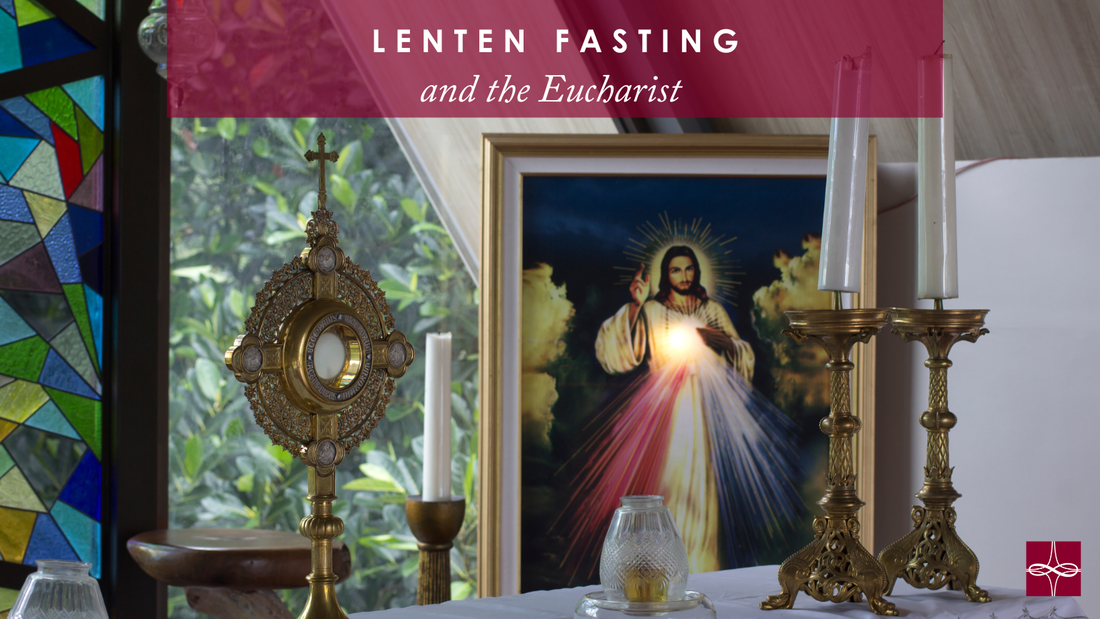
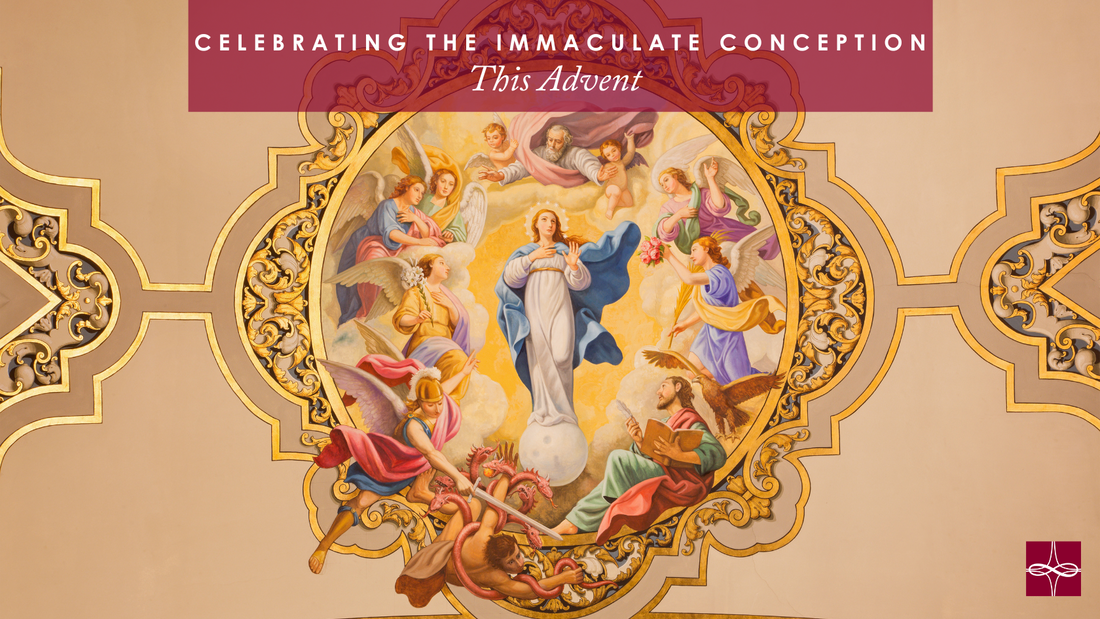
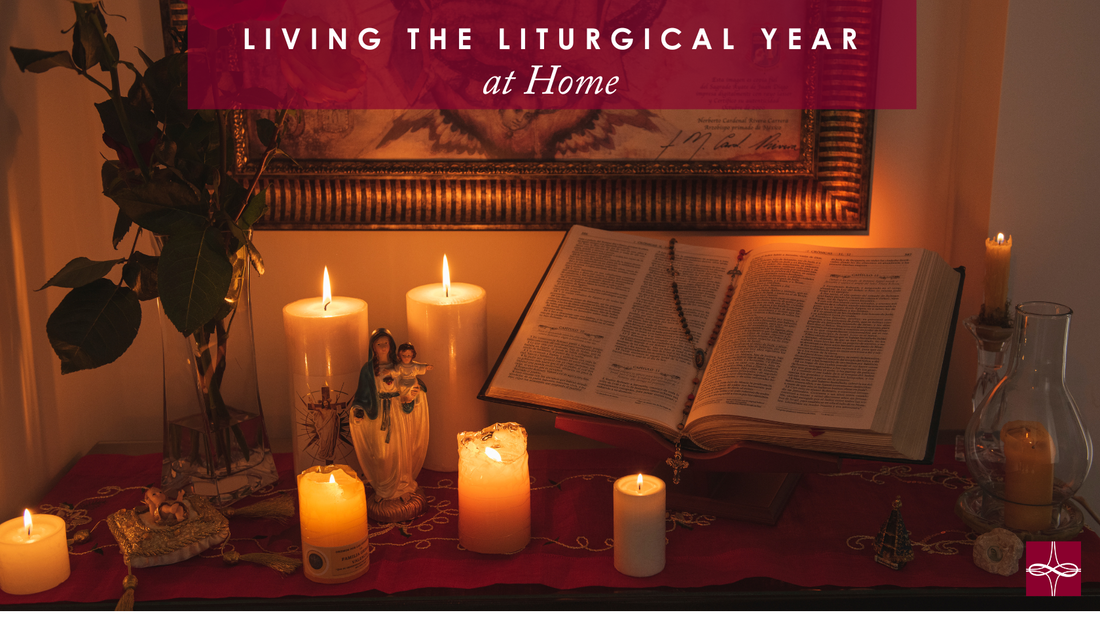
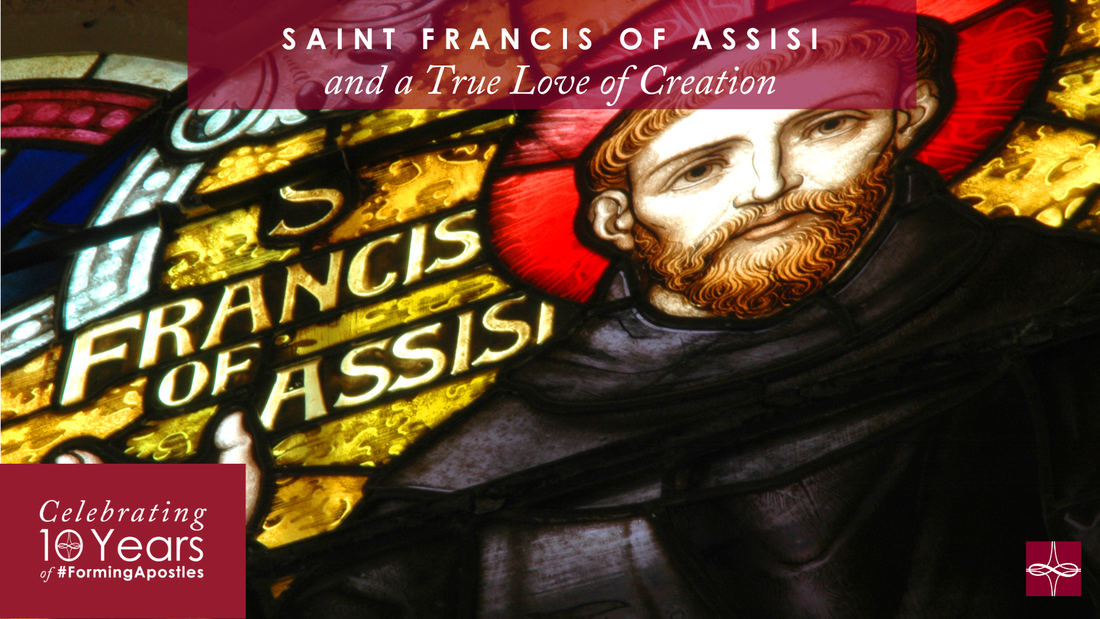
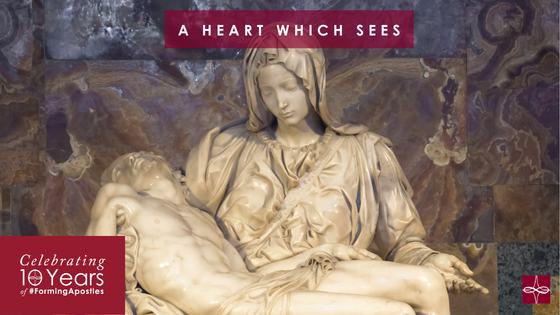

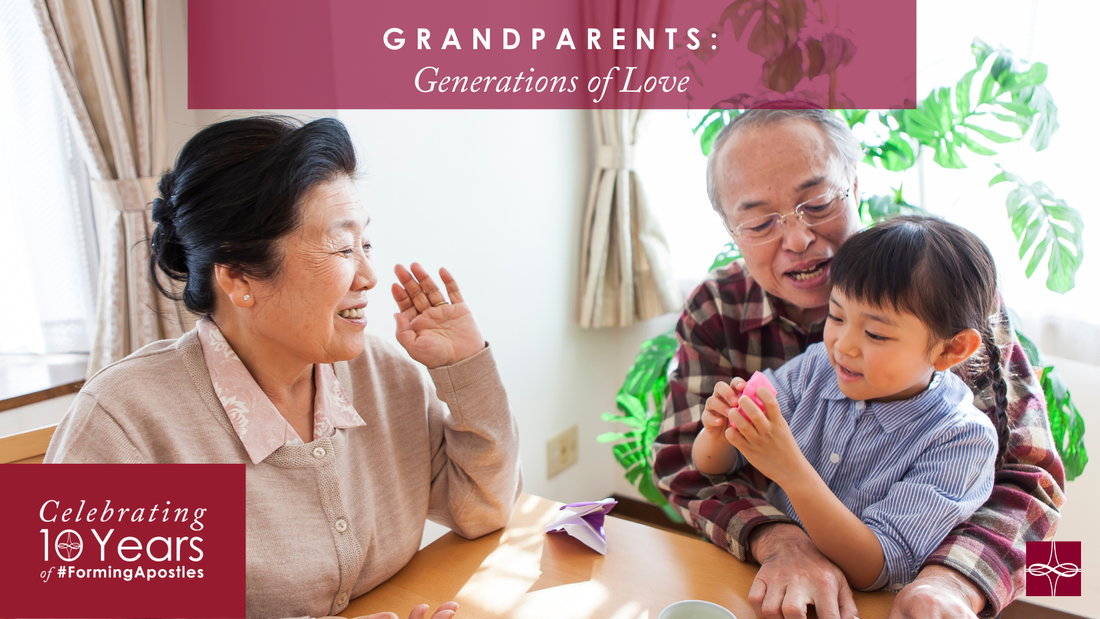
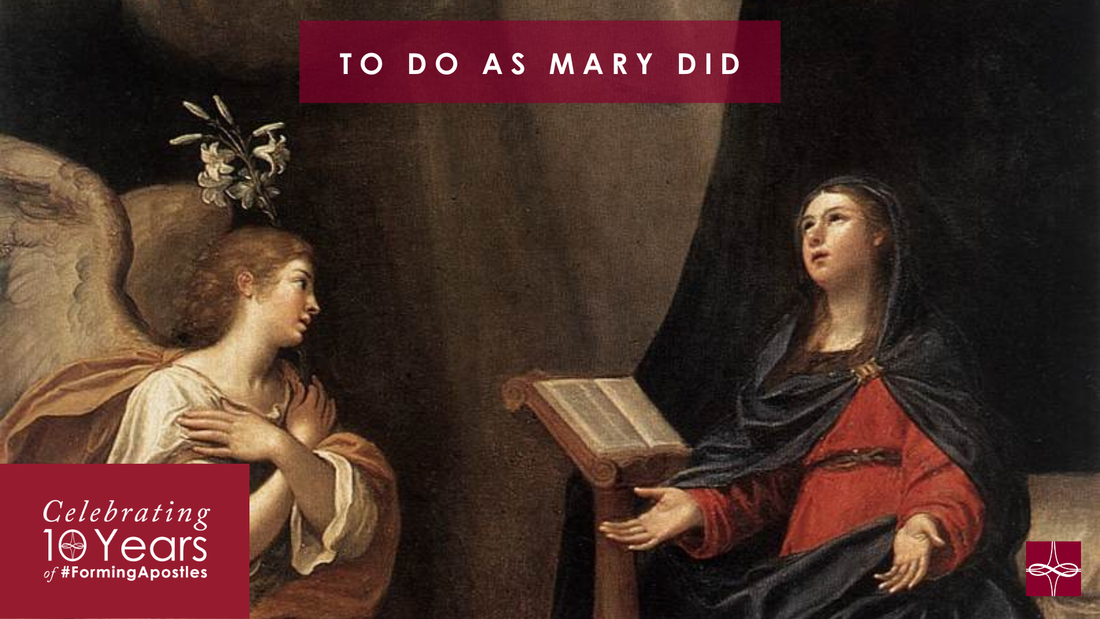
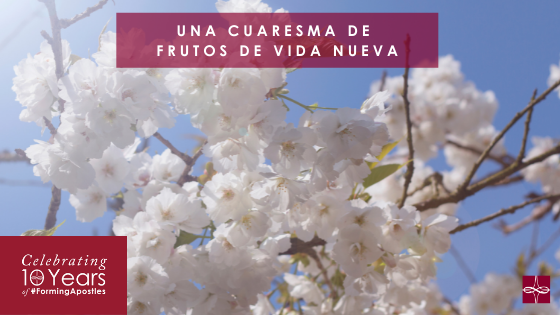

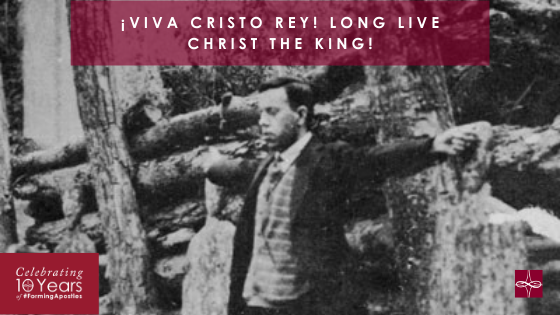

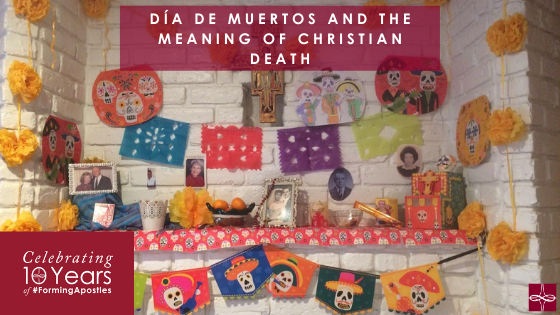

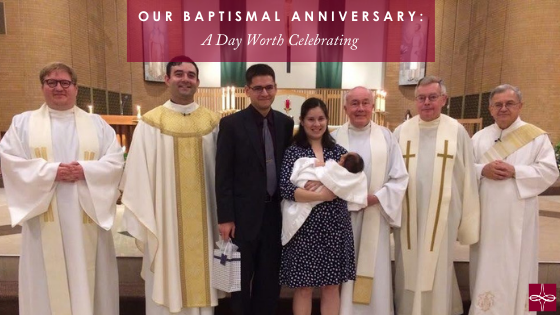



 RSS Feed
RSS Feed